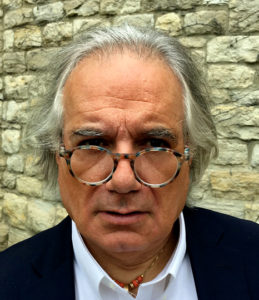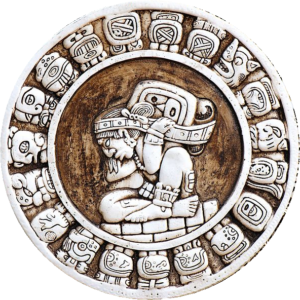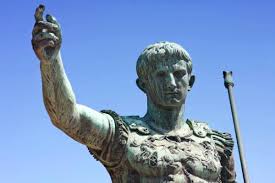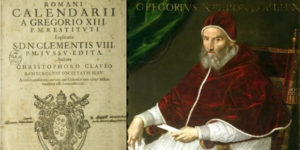
E siamo arrivati al 2018!
We have arrived to 2018!
So much has happened in 2017 and I am sure much will happen in 2018. During this past month, Santa Lucia and the two (and not one) cookie classes were a huge success and well attended. Be ready for more of these types of events continuing throughout 2018.
In January our Event Committee will meet and be busy organizing the Calendar of Events for the whole year. We hope to publish this with our February Newsletter, so be looking for opportunities to become involved and to attend.
On January 24th we will be offering a class featuring three typical Italian soups. Please visit our website for additional information.
Please remember to look for our newly formatted Newsletter that will also be available on our website in the 1st quarter of 2018.
“Subscribe” to our website at www.iaccofia.org to receive notifications of each new posting.
As we begin the New Year I began wondering how we determine the start of a new year. I began researching and found that previous to our Gregorian calendar, the world used the Julian calendar method. Yet, what was used before this to count days and seasons?
It was the Roman calendar that was used by the world. This was mostly an observational lunar calendar whose months began in conjunction with the first signs of a new crescent moon. Since each lunar cycle is about 29.5 days long, each month lasted between 29 and 30 days. However, twelve months of this fell 10 to 11 days short of the solar year, so this was made up through some form of calculation during the winter months. That way the Romans were able to maintain their seasonal religious festivals. The Romans eventually organized their year as one with ten fixed months, each containing 30 or 31 days. The nearly 60 days missing were, again, made up during the winter months as additional days belonging to no month, were added until it seemed everything was back in its’ proper place.
whose months began in conjunction with the first signs of a new crescent moon. Since each lunar cycle is about 29.5 days long, each month lasted between 29 and 30 days. However, twelve months of this fell 10 to 11 days short of the solar year, so this was made up through some form of calculation during the winter months. That way the Romans were able to maintain their seasonal religious festivals. The Romans eventually organized their year as one with ten fixed months, each containing 30 or 31 days. The nearly 60 days missing were, again, made up during the winter months as additional days belonging to no month, were added until it seemed everything was back in its’ proper place.
The Julian calendar was proposed by none other than Julius Caesar  around 45 BC and took effect on January 1 by an edict. He was hoping for a more accurate timeline for sowing and harvesting crops. This calendar had a regular year consisting of 365 days and was divided into 12 months. An added day (leap day) was added to February every four years, thus, the calendar was 365.25 days long on average. This was intended to approximate the Solar Year.
around 45 BC and took effect on January 1 by an edict. He was hoping for a more accurate timeline for sowing and harvesting crops. This calendar had a regular year consisting of 365 days and was divided into 12 months. An added day (leap day) was added to February every four years, thus, the calendar was 365.25 days long on average. This was intended to approximate the Solar Year.
However, Greek astronomers had known that the Solar Year was slightly shorter (11 minutes) than 365.25 days and this Julian calendar did not compensate for this difference. As a result, this calendar would gain about 3 days every 4 centuries.
The Julian calendar was not corrected until 1582 when Pope Gregory XIII issued the Gregorian Reform establishing what is known as the Gregorian Calendar  that is currently used even today. The Gregorian calendar has the same months and days as the Julian calendar, however, this calendar does not add a Leap Day in years that are divisible by 100. The exception for this is when the year is evenly divisible by 400, which is why the year 3000 had 29 days in February. However, there will be no Leap Day in the year 2100 or 2200, for example.
that is currently used even today. The Gregorian calendar has the same months and days as the Julian calendar, however, this calendar does not add a Leap Day in years that are divisible by 100. The exception for this is when the year is evenly divisible by 400, which is why the year 3000 had 29 days in February. However, there will be no Leap Day in the year 2100 or 2200, for example.
Countries, including Italy, Spain and France converted from Julian to Gregorian immediately in 1582. Great Britain didn’t switch until 1752. Greece didn’t stop using the Julian calendar until as recently as 1922. Some wonder why Russia didn’t switch to the Gregorian calendar with the rest of Europe. Many believe this was due to the fact that this calendar was introduced by a Roman Catholic Pope. Russia did eventually switch over in 1918.
Thanks again for your support in 2017 and I kindly request your continued support of the efforts of the Italian-American Cultural Center of Iowa in 2018 in order to spread our culture throughout our community.
Grazie – Thank You
Buon Anno Nuovo – Happy New Year
Paolo Bartesaghi
